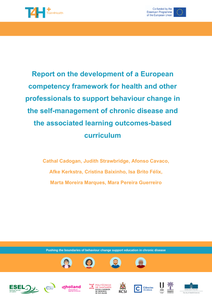Abstract: Background: Chronic obstructive pulmonary disease (COPD) and asthma have a high prevalence and disease burden. Blended self-management interventions, which combine eHealth with face-to-face interventions, can help reduce the disease burden. Objective: This systematic review and meta-analysis aims to examine the effectiveness of blended self-management interventions on health-related effectiveness and process outcomes for people with COPD or asthma. Methods: PubMed, Web of Science, COCHRANE Library, Emcare, and Embase were searched in December 2018 and updated in November 2020. Study quality was assessed using the Cochrane risk of bias (ROB) 2 tool and the Grading of Recommendations, Assessment, Development, and Evaluation. Results: A total of 15 COPD and 7 asthma randomized controlled trials were included in this study. The meta-analysis of COPD studies found that the blended intervention showed a small improvement in exercise capacity (standardized mean difference [SMD] 0.48; 95% CI 0.10-0.85) and a significant improvement in the quality of life (QoL; SMD 0.81; 95% CI 0.11-1.51). Blended intervention also reduced the admission rate (relative ratio [RR] 0.61; 95% CI 0.38-0.97). In the COPD systematic review, regarding the exacerbation frequency, both studies found that the intervention reduced exacerbation frequency (RR 0.38; 95% CI 0.26-0.56). A large effect was found on BMI (d=0.81; 95% CI 0.25-1.34); however, the effect was inconclusive because only 1 study was included. Regarding medication adherence, 2 of 3 studies found a moderate effect (d=0.73; 95% CI 0.50-0.96), and 1 study reported a mixed effect. Regarding self-management ability, 1 study reported a large effect (d=1.15; 95% CI 0.66-1.62), and no effect was reported in that study. No effect was found on other process outcomes. The meta-analysis of asthma studies found that blended intervention had a small improvement in lung function (SMD 0.40; 95% CI 0.18-0.62) and QoL (SMD 0.36; 95% CI 0.21-0.50) and a moderate improvement in asthma control (SMD 0.67; 95% CI 0.40-0.93). A large effect was found on BMI (d=1.42; 95% CI 0.28-2.42) and exercise capacity (d=1.50; 95% CI 0.35-2.50); however, 1 study was included per outcome. There was no effect on other outcomes. Furthermore, the majority of the 22 studies showed some concerns about the ROB, and the quality of evidence varied. Conclusions: In patients with COPD, the blended self-management interventions had mixed effects on health-related outcomes, with the strongest evidence found for exercise capacity, QoL, and admission rate. Furthermore, the review suggested that the interventions resulted in small effects on lung function and QoL and a moderate effect on asthma control in patients with asthma. There is some evidence for the effectiveness of blended self-management interventions for patients with COPD and asthma; however, more research is needed. Trial Registration: PROSPERO International Prospective Register of Systematic Reviews CRD42019119894; https://www.crd.york.ac.uk/prospero/display_record.php?RecordID=119894
DOCUMENT

Chronic diseases represent a significant burden for the society and health systems; addressing this burden is a key goal of the European Union policy. Health and other professionals are expected to deliver behaviour change support to persons with chronic disease. A skill gap in behaviour change support has been identified, and there is room for improvement. Train4Health is a strategic partnership involving seven European Institutions in five countries, which seeks to improve behaviour change support competencies for the self-management of chronic disease. The project envisages a continuum in behaviour change support education, in which an interprofessional competency framework, relevant for those currently practising, guides the development of a learning outcomes-based curriculum and an educational package for future professionals (today’s undergraduate students).
DOCUMENT

In 2019, The Global Initiative for Chronic Obstructive Lung Disease (GOLD) modified the grading system for patients with COPD, creating 16 subgroups (1A–4D). As part of the COPD Cohorts Collaborative International Assessment (3CIA) initiative, we aim to compare the mortality prediction of the 2015 and 2019 COPD GOLD staging systems. We studied 17 139 COPD patients from the 3CIA study, selecting those with complete data. Patients were classified by the 2015 and 2019 GOLD ABCD systems, and we compared the predictive ability for 5-year mortality of both classifications. In total, 17139 patients with COPD were enrolled in 22 cohorts from 11 countries between 2003 and 2017; 8823 of them had complete data and were analysed. Mean±SD age was 63.9±9.8 years and 62.9% were male. GOLD 2019 classified the patients in milder degrees of COPD. For both classifications, group D had higher mortality. 5-year mortality did not differ between groups B and C in GOLD 2015; in GOLD 2019, mortality was greater for group B than C. Patients classified as group A and B had better sensitivity and positive predictive value with the GOLD 2019 classification than GOLD 2015. GOLD 2015 had better sensitivity for group C and D than GOLD 2019. The area under the curve values for 5-year mortality were only 0.67 (95% CI 0.66–0.68) for GOLD 2015 and 0.65 (95% CI 0.63–0.66) for GOLD 2019. The new GOLD 2019 classification does not predict mortality better than the previous GOLD 2015 system.
DOCUMENT
